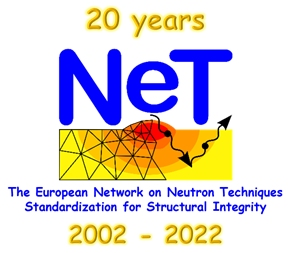Speaker
Description
Diffraction methods are powerful tools for non-destructive analysis of applied or residual stresses. The high penetrating power of neutrons when compared to laboratory x-ray sources, i.e. several cm instead of a few tens of μm, opens up the possibility to analyze residual stresses in the interior of technical components rather than just at the surface. This makes neutrons an ideal tool for residual stress determination in thick samples like the welded test specimens used in the different NeT task groups.
In addition, the possibility to keep the measurement gauge volume cubic in all possible sample orientations is extremely helpful in order to analyze the local stress tensor used to validate the extensive numerical simulations of the corresponding NeT task group projects.
In this presentation, we will give an overview on the basic principles and requirements of the method and its use within NeT. A few key examples are given as well as a quick review on lessons learned during the measurement campaigns.

